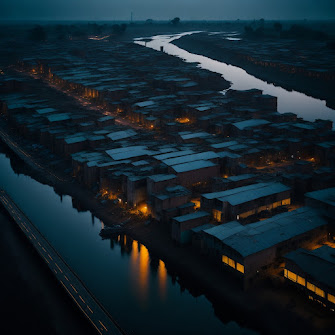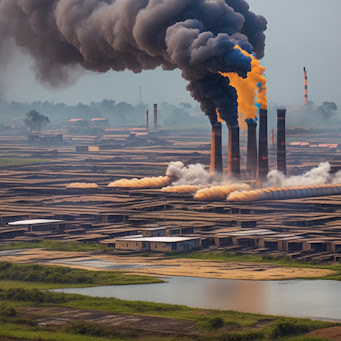The textile industry is a vital contributor to Bangladesh's economy, but it also has a significant impact on the environment. The country is one of the world's largest textile producers, with thousands of factories employing millions of workers. However, this growth has come at a cost. The textile industry is a major source of pollution, with factory emissions, toxic chemicals and particles, and industrial waste contaminating air, water, and soil. The environmental impact of the textile industry in Bangladesh is a complex issue that affects not only the country's natural resources but also the health and well-being of its people.
In this article, we will explore the environmental impact of the textile industry in Bangladesh in detail. We will examine the pollution caused by chemicals and dyes used in textile production, the impact on air and water quality, and the effects on aquatic life and ecosystems. We will also look at the carbon footprint of the industry and its contribution to climate change. Additionally, we will discuss sustainable practices in the textile industry, consumer demand for sustainable textiles, and the concept of circular economy and green manufacturing. Finally, we will consider the role of environmental regulations, corporate social responsibility, and environmental activism in promoting sustainable development and protecting the environment. Join us as we delve into the environmental impact of the textile industry in Bangladesh and explore ways to create a more sustainable future for all.
Environmental Impact of the Textile Industry in Bangladesh
The textile industry in Bangladesh has a significant impact on the environment, particularly in terms of pollution and carbon emissions. Here are some of the key environmental concerns associated with the industry:
- Pollution: The textile industry is a major source of water pollution in Bangladesh. The industry generates a large volume of wastewater, which is often discharged untreated into rivers and other water sources. This wastewater contains a range of pollutants, including chemicals, dyes, and other harmful substances. When these pollutants enter water sources, they can harm aquatic life and contaminate water supplies for nearby communities. Similarly, the industry is also a significant source of air pollution, with factory emissions contributing to poor air quality in many areas.
- Carbon Footprint and Climate Change: The textile industry is also a significant contributor to carbon emissions and climate change. The industry is energy-intensive, with many factories relying on fossil fuels for energy. This reliance on fossil fuels leads to the release of greenhouse gases, which contribute to global warming and climate change. Bangladesh is particularly vulnerable to the impacts of climate change, with rising sea levels, increased flooding, and more frequent natural disasters all posing significant challenges for the country.
Carbon Footprint and Climate Change
Reducing the carbon footprint of the textile industry is essential to addressing climate change and promoting sustainability. Here are some sustainable practices that can help reduce the carbon footprint of the industry:
- Renewable Energy: The textile industry can reduce its reliance on fossil fuels by adopting renewable energy sources such as solar, wind, and hydropower. Investing in renewable energy can not only reduce carbon emissions but also help reduce energy costs in the long term.
- Energy Efficiency: Improving energy efficiency can also help reduce the carbon footprint of the industry. This can be achieved through measures such as improving insulation, upgrading equipment, and optimizing production processes.
- Sustainable Materials: The use of sustainable materials such as organic cotton and recycled polyester can also help reduce the carbon footprint of the industry. These materials are produced using fewer resources and generate fewer emissions than traditional materials.





Comments
Post a Comment